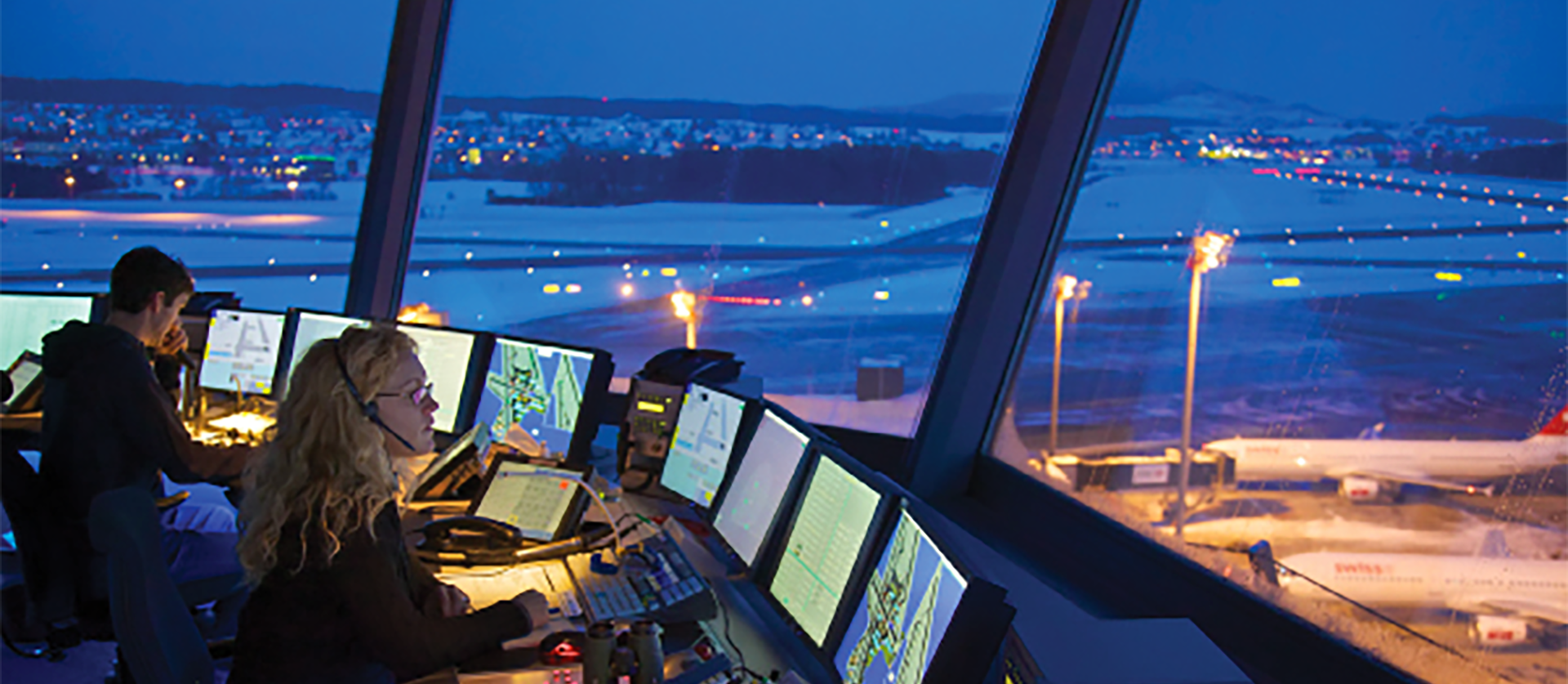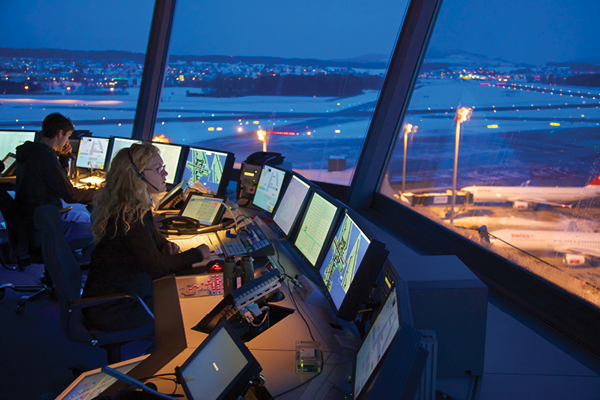Airspace Q2 2019 – Power to the people
Human performance remains the critical link in safe and efficient air navigation service provision.

The air traffic management sector is replete with talk of automation, digitisation, augmented reality and artificial intelligence. There is no doubt that these developments will change the role of people but equally assured is that people will not be replaced.
“If the guiding principle that people create safety continues and is understood to be the basis for the excellent safety performance in the aviation industry, the interaction between operator and technology must be the focus of our efforts more than ever before,” says Jörg Leonhardt, Co-Chair of the CANSO Human Performance Management Task Force and Head of Human Factors/Ergonomics at DFS Deutsche Flugsicherung GmbH (DFS).
In other words, it is becoming increasingly important to consider how the components of the overall system are aligned to ensure that safety is never compromised, and maximum benefits are obtained. That means making the most out of people.
A necessary enabler
The CANSO Standard of Excellence in Human Performance Management, published in March 2019, helps ANSPs tackle this important subject. The Standard is based on input and validation from 16 CANSO Member ANSPs and EUROCONTROL, steered by three CANSO Workgroup Co-chairs from NAV CANADA, NATS and DFS.
“In most ANSPs, there are activities related to human performance management, for example, training, teamwork or selection,” says Leonhardt. “However, it is often
the case that human performance activities are carried out in different Departments and the individual elements not connected. The new Standard helps enormously since it not only measures the performance of individual components but also establishes a framework for the integration of these elements.”
To assess, develop and improve their human performance management, ANSPs need to consider 12 elements (see page 33).
The necessary enabler is the first element, Policy, Strategy and Resources, which must be embedded within and support the organisation’s vision. The appropriate focus and resources have to be provided to make this possible.
An ANSP will, of course, need to know how successful it has been in implementing this element before it can go any further. For this, the publication uses the same levels of maturity as those used in the CANSO Standard of Excellence in Safety Management Systems. These levels run from A to E (see page 34).
Level A equates to informal arrangements where human performance management considerations have not been formally embedded at the organisational level but rather depend on the individual.
There are then three intermediate steps before an organisation achieves the optimised Level E, where human performance management processes set international best practice, focusing on innovation and improvement.
The publication suggests that it is important to reach at least Level B in the Policy, Strategy and Resources element “as this reflects a maturity level where an ANSP can identify priorities and the resources available”.
This strategic understanding of human performance enables the development of a plan for establishing a human performance management system.
Integrating elements
The following 10 elements can be undertaken in any order, each bringing insight into a particular aspect of human performance that can positively affect an organisation. An ANSP should consider:
- what it already has in place
- what resources it has available
- the priorities within the business
Although it is easier to start with one or two elements rather than addressing all 10 at once, in the medium term it is necessary to consider all 10 elements. Different aspects of human performance are traditionally managed by different departments, but a key message of the publication is that all human performance activities must be coordinated.
“The Standard pointed at some gaps between various groups responsible for the 12 elements and enabled us to see where efficiency gains can be attained,” reveals Remi Joly, Co-Chair of the CANSO Human Performance Management Task Force and National Manager, Human Factors at NAV CANADA.
“This is key to the development of an effective human performance management programme because all 12 elements of human performance management need to be integrated and managed.”
As an illustration, there is no point in implementing a state-of-the-art system if nobody knows how to use it. So, ATM equipment and support tools have an obvious crossover with operational training, leading to positive changes in operational procedures.
The impact of the change will need to be ascertained, which may drive further developments in selection, health and wellbeing or roles and responsibilities.
How the new system is working is also something that falls under the investigation and learning element while leadership is clearly vital to the overall success of the new system. In short, human performance management is a complex, interlinked business.
Nevertheless, two elements – ATM equipment and support tools and human performance investigation and learning – are offered as ideal starting points by the publication. “Addressing the former is a proactive way to improve human performance while the latter provides a better understanding of current human performance and where improvements are needed,” it states.
It is also suggested that an ANSP reaches at least Level B for each of the 10 elements rather than increasing some elements to a higher level while leaving others at Level A. Because of the close relationships that exist between them, this approach ensures a balanced approach to human performance management.
Once Level B is achieved for all 10 elements, attention can be directed at achieving Level C for those deemed most important to the organisation.
Ultimately, in line with the recommended target for the CANSO Standard of Excellence in Safety Management Systems, it is suggested that ANSPs get to at least Level C for each element.
This guarantees that human performance is being actively managed in a consistent manner and the benefits of that process are being fed into organisational safety and efficiency.
Delivery assured
The final element, Assurance, completes the human performance management programme. It ensures that decision-makers are confident that human performance is being managed in an integrated, comprehensive fashion and delivering business and safety benefits.
The CANSO Standard of Excellence in Human Performance Management recommends that one individual is given responsibility for a human performance management programme or “a joint steering committee is set up to oversee the implementation”.
There is naturally a requirement to commit resources, both personnel and financial, to achieve success. Though exact amounts of each will differ depending on the size and complexity of the organisation, dedicated professionals who focus on developing the appropriate elements and spreading awareness among the wider workforce are essential.
“Within NATS, we believe that people create safety and that human performance is a key component of the provision of a safe, effective and efficient air traffic management,” says Neil May, CANSO Human Performance Management Task Force Co-Chair and Head, Human Factors, NATS. “With the human remaining a critical part of the ATM system for the foreseeable future, the need to manage human performance in NATS remains a high priority and the new CANSO Standard is helping us to achieve this.
“The CANSO Standard of Excellence in Human Performance Management will ensure that the right human performance activities are being undertaken at the right time with the right results, and that these activities are coordinated across organisational departments and across different operational units to get optimal human performance.”
The CANSO Standard of Excellence in Human Performance Management is available for download.
Why is a human performance management programme necessary?
People continue to be the foundation for a safe, efficient and effective air traffic management system. The CANSO Standard of Excellence in Human Performance Management states: “It is people that control aircraft, it is people that maintain equipment and it is people that create safety.”
Because ATM is a complex system in a state of constant change, a high level of performance from the humans in the system has never been so important. Adaptation and flexibility are key ingredients for successful ATM, and it is the people in the system that provide these qualities.
All areas that contribute to human performance must therefore be managed at a programme level in an integrated manner. The CANSO Standard of Excellence in Human Performance Management provides ANSPs with a means to identify an organisation’s priorities for improvement and the actions that should be undertaken.


